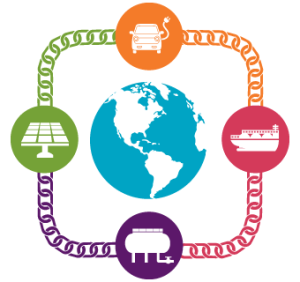President Trump Imposes Tariffs on Imported Solar Modules and Cells
By Stacy Ettinger and James Wrathall
President Trump announced the imposition of tariffs on imported crystalline silicon photovoltaic (“CSPV”) modules and cells, as previously recommended by the U.S. International Trade Commission. The tariffs will be effective February 7, 2018.
Importers will be required to pay a tariff in the amount of 30 percent of the entered value in the first year, declining by 5 percent a year in each of the second, third, and fourth years. With respect to CSPV solar cells, the first 2.5 gigawatts imported in each year will be exempted from the tariff. These tariffs are in addition to the antidumping and countervailing duties relief previously imposed by the U.S. Department of Commerce on Chinese solar imports.
For U.S. solar developers and installers, the initial 30 percent tariff is expected to add 10 to 15 cents per watt to the final installed price. Green Tech Media Research (“GTM”) has predicted this will cause a reduction of approximately 10 percent in U.S. installed solar capacity. The tariffs do not apply to technologies other than CSPV, specifically thin film modules. Therefore manufacturers of thin film products such as Solar Frontier and First Solar may see increased relative market share.
The biggest impacts on projects are expected in the utility-scale solar sector, which is largely dependent on being competitive with other generation sources. Residential solar is viewed as more resilient and less sensitive to price changes.
Some CSPV manufacturing might shift to free trade agreement countries not included in the injury finding. In particular, manufacturers based in Singapore or Canada may benefit, if the President’s proclamation reflects the approach taken by a majority of the ITC Commissioners to exclude these countries from the tariff program.
China, South Korea, and other countries with exports subject to the tariffs will likely file complaints before the World Trade Organization (“WTO”). It is unclear what position the current Administration would take in response to an adverse WTO decision, if any. In any case, the WTO dispute settlement process itself could take anywhere from two to four years to complete.
Companies should consider steps to mitigate impacts of these tariffs. Reportedly over two gigawatts of modules have already been procured for 2018 projects in the United States. Accessing stockpiles of solar equipment may aid in reducing economic impacts.
The formal proclamation signed today by President Trump provides for exclusion of particular products from the safeguard measure. Procedures for requests for exclusion will be published in the Federal Register within 30 days. Companies may want to review the product exclusion process and consider whether an exclusion request is warranted.


